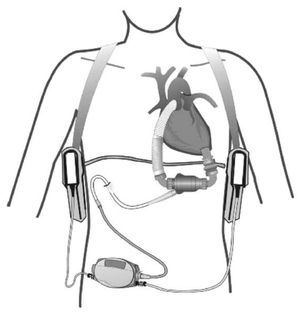Student projects
Determining indicators of erythrocyte damage in vitro
Heart failure is a global public health issue with more than 23 million cases per year. Many patients with end-stage heart failure would require transplantation, but due to the shortage of donor hearts, mechanical circulatory support is often the therapy of choice. Among the employed systems, continuous flow left ventricular assist devices (LVAD) are the most prevalent and show the highest survival rates.
Even though such devices greatly improve patient outcome compared to no therapy, there are still many unresolved problems. One of them is mechanically induced hemolysis due to high shear rates, which leads to release of free hemoglobin into the blood plasma and ultimately to the destruction of the red blood cells (RBC). This effect may be reduced by optimization of the pump design with respect to shear rates and exposure time of RBCs to high shear.
In this project we aim to establish the methods required to quantify erythrocyte damage in-vitro. In microchannel experiments, RBCs will be exposed to shear stresses and shear stress gradients comparable to those occurring in ventricular assist devices. The goal of the setup is to quantify the resulting hemolysis as well as signs of RBC senescence and other RBC damage. This master thesis aims at identifying the most relevant parameters to measure and establishing the corresponding protocols.
This project is part of the Zurich Heart Project, a collaborative endeavor between the University Hospital, the University and ETH Zurich.
Information
(position closed)
Student: Kristina Koch
Project type: Medical Master thesis (2016)
For further information, please contact
Prof. Vartan Kurtcuoglu
Dr. Diane de Zélicourt
Lena Wiegmann
